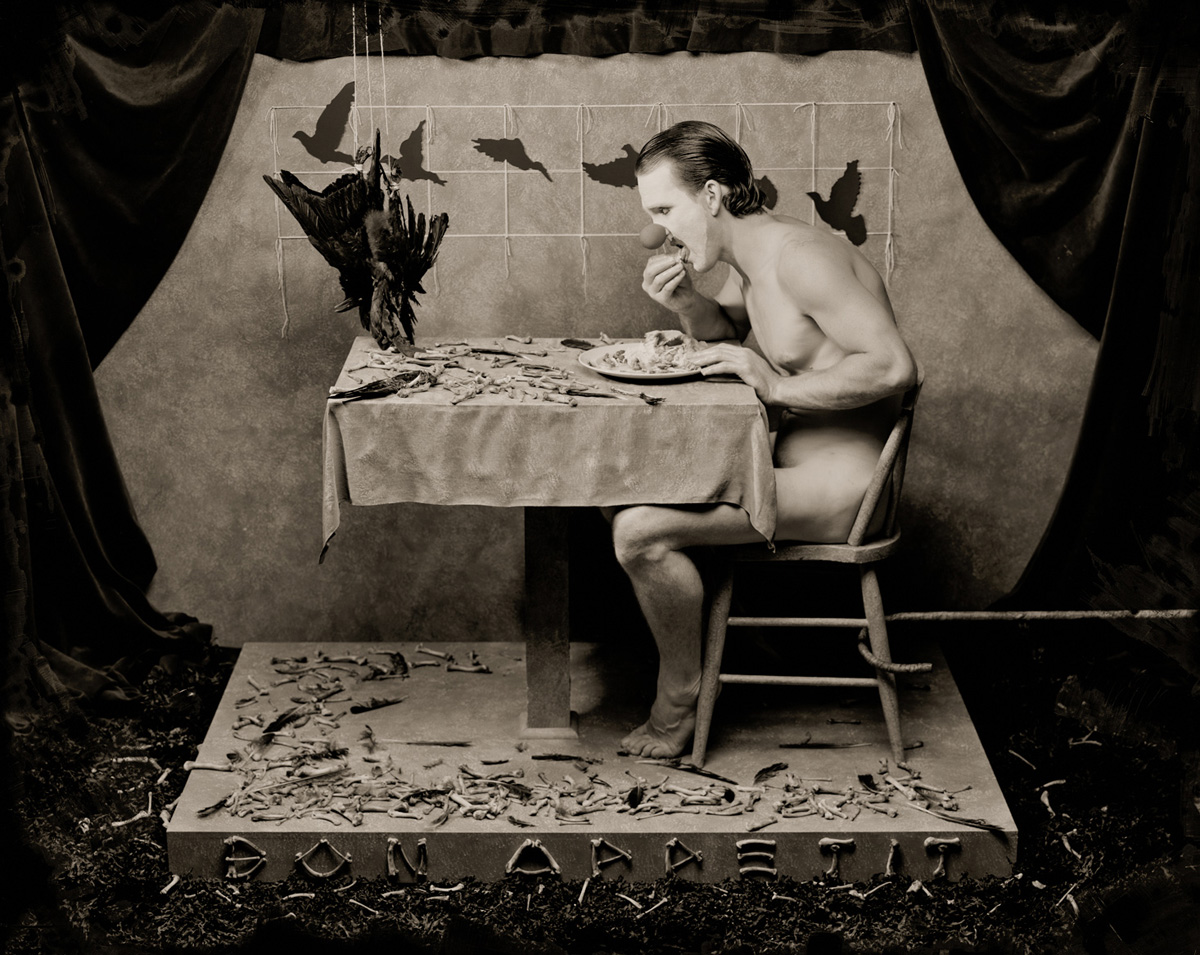I grew up in Culver City, California – Hollywood’s backyard, on the same streets that the Keystone Cops had once run amok and where Oz’s “little people” created chaos. As a child of the fifties and sixties, I could easily breach the walls that divided the Angelino neighborhood from the backlots of MGM and Desilu Studios, and enter a fantasy world where at a turn I could step from a World War II street in Paris into a New York City ghetto; or take the helm of the H.M.S. Bounty, where Brando’s Fletcher Christian defeated the evil Captain Bligh, and sail her across a glassy backlot pond into a tropical sky façade. It was the stuff of dreams. It is hard to overstate the influence that the film industry had on those of my generation growing up in Southern California.
The Installation Photographs found their roots in that culture and, as the name implies, are installations created in the studio for the monocular view of the camera. Building these tableau compositions was much like theater or making Hollywood movies (though on a much smaller scale). Acting as writer, director, producer, prop-master, key grip and camera man; I scripted the action, built sets, made or found props, controlled the composition, directed models, set the lighting and in an instant, exposed the film that would eventually be used to make a finished print. Once complete, I struck the set, dismantled and discarded props, prepped the studio and the process would begin once again.

















